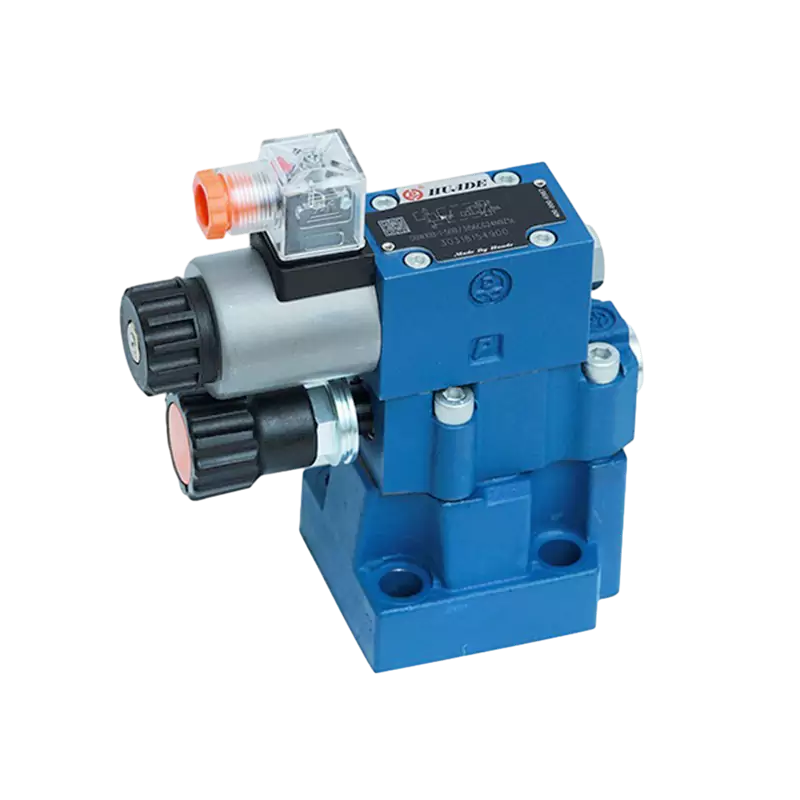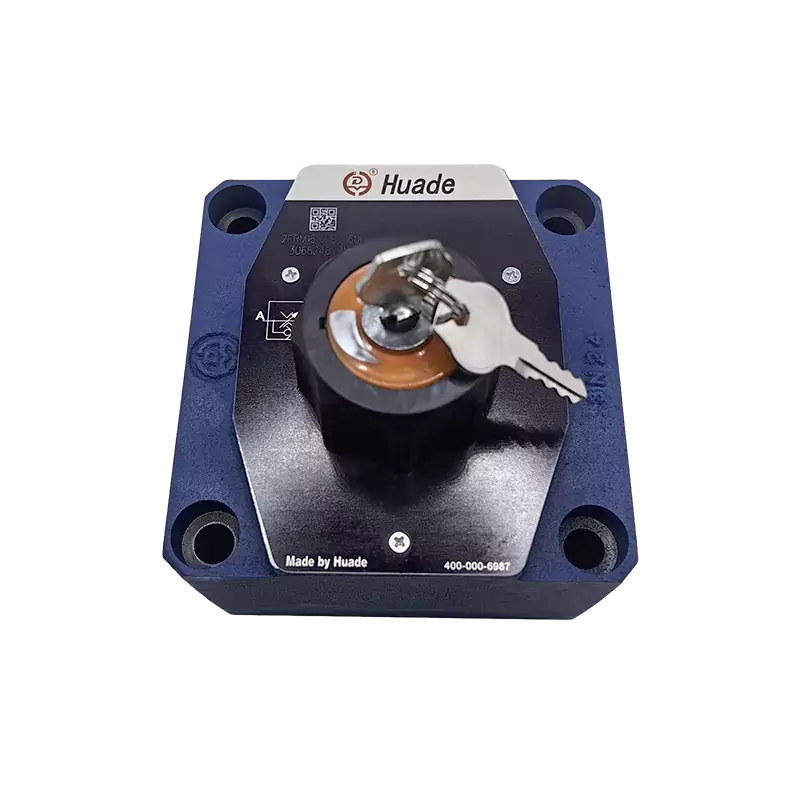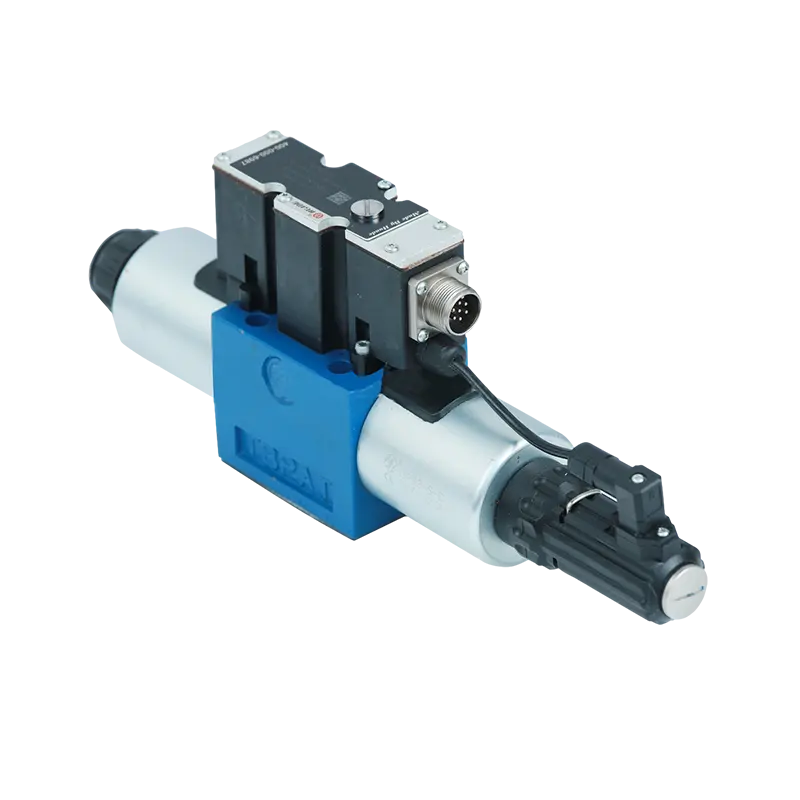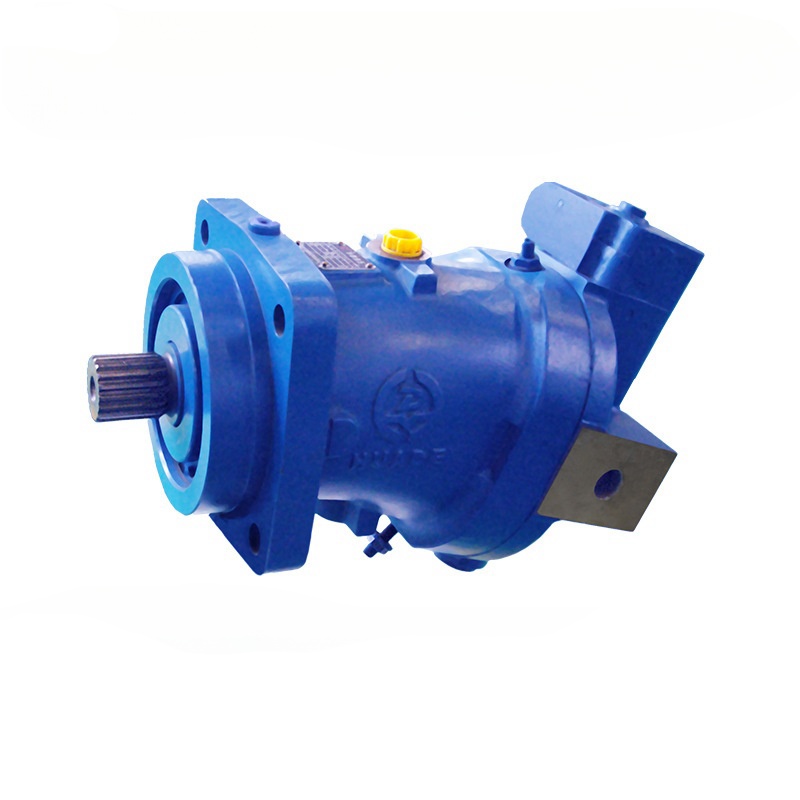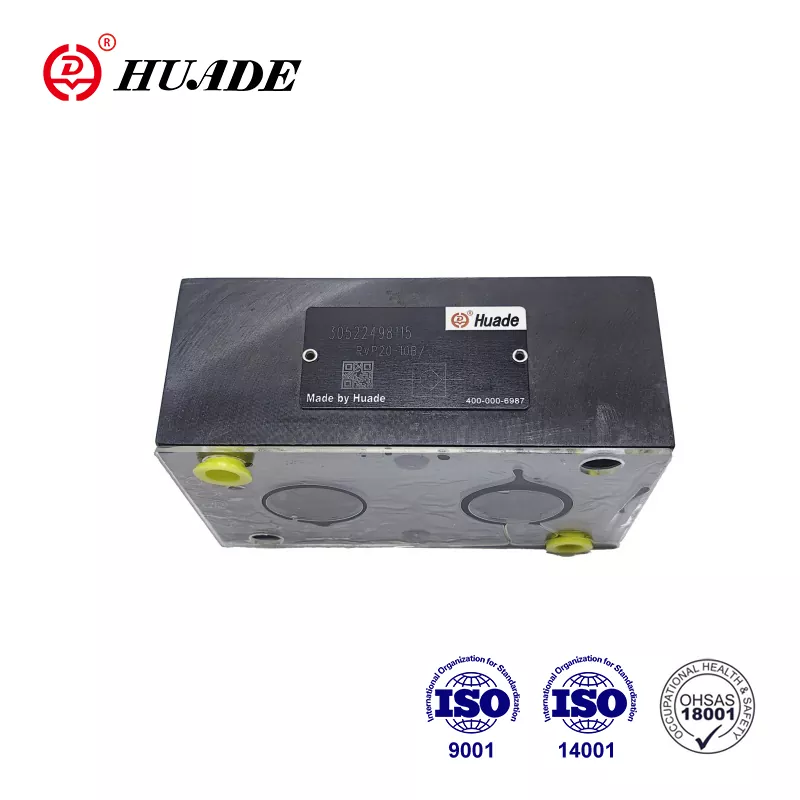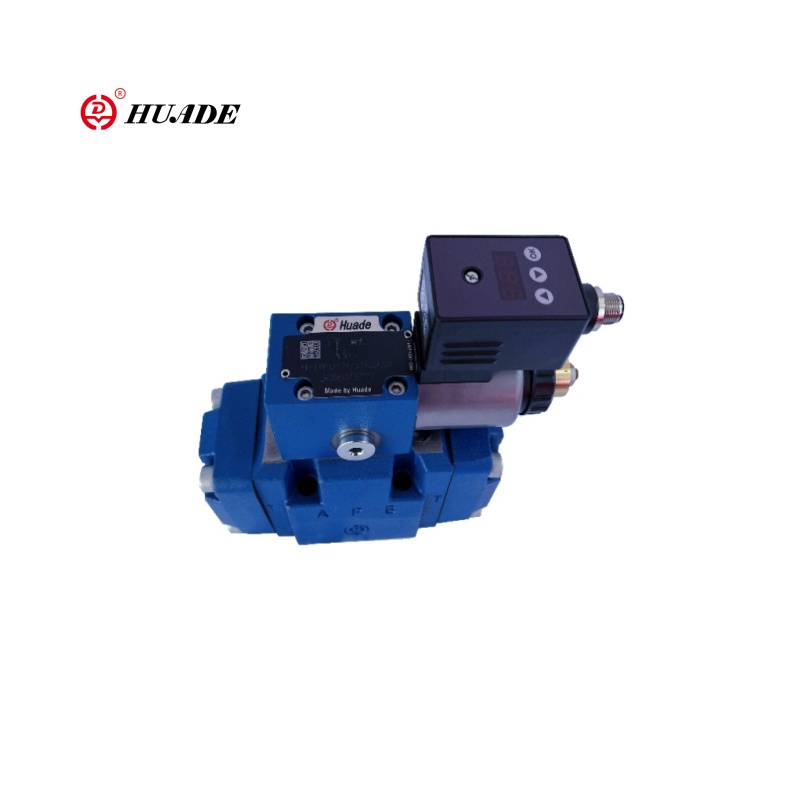Learning how to read a hydraulic valve diagram might feel overwhelming when you first encounter those geometric shapes, lines, and arrows. But here's the truth that experienced technicians know: hydraulic schematics are not mysterious codes. They are a standardized functional language designed to communicate how fluid power systems actually work. Once you understand the underlying logic, these diagrams become readable maps that show you exactly what happens inside a machine.
This guide walks you through the essential skills for interpreting hydraulic valve diagrams according to ISO 1219-1:2012 standards, which govern how hydraulic symbols are drawn worldwide. Whether you are a maintenance technician troubleshooting a malfunctioning cylinder, an engineering student learning system design, or an equipment operator trying to understand your machine better, you will find practical techniques here that translate abstract symbols into concrete mechanical actions.
Understanding the Foundation: What Hydraulic Diagrams Actually Represent
Before diving into specific symbols, you need to grasp a fundamental principle that separates novices from competent diagram readers: hydraulic schematics are structurally agnostic. This means the symbols tell you what a component does to the fluid, not how it is physically constructed inside its steel housing.
When you look at a directional control valve symbol on a diagram, that symbol does not reveal whether the actual valve uses a spool design, poppet mechanism, or sliding plate construction. The symbol only shows you the functional logic: which ports connect when the valve shifts position, how it is actuated, and what happens to fluid flow. This abstraction is intentional and necessary, because the same functional behavior can be achieved through completely different mechanical designs.
This is why a small cartridge valve might handle pressures exceeding 5,000 PSI while a massive cast iron valve body operates at only 500 PSI. The physical appearance misleads you. The schematic symbol strips away the misleading exterior and shows you the logical connections that matter for understanding system behavior. When you read a hydraulic valve diagram correctly, you are essentially reading the machine's decision-making logic, not its physical anatomy.
The ISO 1219 standard ensures consistency across manufacturers and countries. A valve symbol drawn in Germany follows the same conventions as one drawn in Japan or the United States. This standardization eliminates confusion that would arise if every manufacturer used proprietary symbols. When troubleshooting imported equipment or reading documentation from different suppliers, this universal language becomes invaluable.
The Visual Language: Line Types and Their Engineering Meanings
Every line on a hydraulic diagram carries specific meaning through its visual style. Understanding these line conventions is your first critical skill for reading hydraulic valve diagrams accurately, because the lines show you how energy moves through the system and what role each fluid path plays.
Solid continuous lines represent working lines that carry the main hydraulic power. These lines transmit fluid under pressure from the pump to actuators like cylinders and motors. The solid line tells you this path handles significant flow rates and pressure changes. When tracing circuit operation, you always start by following these solid lines from the pump outlet through control valves to the load. If you see a break or leak in a working line during actual system inspection, you know you have found a critical failure point that stops the machine from functioning.
Short dashed lines indicate either pilot lines or drain lines, and context tells you which. Pilot lines carry control signals rather than working power. The fluid in these lines typically flows at low volumes but communicates pressure information that causes valves to shift or actuators to receive feedback. For example, when you see dashed lines connecting from a pressure sensing point to a valve actuator, you are looking at a pilot control circuit. The pressure level at that sensing point, not high flow volume, triggers the valve action.
Drain lines also use dashed line symbols and direct internal leakage oil back to the tank. Every hydraulic pump and motor experiences some internal leakage past sealing surfaces during normal operation. This leakage oil must return to the reservoir to prevent pressure buildup inside the component housing. When you see a dashed line coming from a pump or motor symbol and going directly to the tank symbol, that is the case drain line. If that drain line becomes restricted or blocked in the actual system, the housing pressure rises until it ruptures the shaft seal, a common and expensive failure mode.
Chain lines with alternating long and short dashes outline component enclosures or integrated valve manifolds. This tells you that multiple symbols drawn inside that boundary physically exist as a single assembled unit. During maintenance, you cannot remove or replace individual components inside that chain line boundary separately. You must treat them as one integrated assembly. This distinction matters significantly when ordering spare parts or planning repair procedures.
Here is how line types guide your troubleshooting approach:
| Line Type | Visual Appearance | Functional Role | Troubleshooting Priority |
|---|---|---|---|
| Working Line | Solid continuous | Transmits high pressure and high flow to drive loads | Primary leak points; excessive pressure drop locations; rupture causes complete system failure |
| Pilot Line | Short dashes | Transmits pressure signals for valve actuation | Blockage prevents valve shifting; extremely low flow volume; check first if valve does not respond |
| External Drain | Short dashes to tank | Returns internal component leakage to reservoir | High pressure or flow here indicates severe internal seal wear or failure |
| Component Enclosure | Chain dash-dot line | Defines physical boundaries of integrated assemblies | Indicates parts inside cannot be serviced individually; special tools may be required |
| Mechanical Linkage | Double line or thin dash-dot | Shows physical connections like shafts, levers, feedback rods | Check for broken mechanical connections rather than hydraulic problems |
While many engineering drawings use only black and white line styles, some manufacturer documentation and training materials add color coding to visualize pressure states quickly. Red typically indicates high working pressure near the pump outlet. Blue shows return flow paths near atmospheric pressure. Orange often marks pilot pressure or reduced pressure after a pressure reducing valve. Yellow might indicate metered flow under active control. However, color conventions vary significantly between manufacturers. Caterpillar uses different color standards than Komatsu, for example. Always check the diagram legend before making assumptions based on color alone, because standardized colors do not exist in ISO 1219 specifications.
Decoding Valve Symbols: The Envelope Concept
The envelope concept is the single most important principle for reading hydraulic valve diagrams. Once you master this visualization technique, complex directional control valves become immediately transparent. Here is how the envelope system works and why it matters for understanding valve operation.
Every directional control valve symbol consists of adjacent square boxes called envelopes. The number of boxes directly corresponds to the number of discrete positions the valve spool can occupy inside the valve body. A two-position valve shows two boxes side by side. A three-position valve displays three adjacent boxes. This visual convention creates an instantly readable map of the valve's possible states.
When you read the diagram, you must perform a mental animation. Imagine the boxes physically sliding across the external port connections labeled P (pressure inlet from pump), T (tank return), A and B (work ports to actuators). Only the box currently aligned with these port labels shows you the actual fluid connections at that moment. The other boxes are irrelevant until the valve shifts position.
Here is the critical reading technique: Start by locating the port labels around the valve symbol perimeter. These labels remain fixed. Now look at the valve actuation symbols on each end of the envelope boxes. If the left side shows an energized solenoid, mentally slide the left box over to align with the port labels. The internal flow paths drawn in that left box now show you which ports connect. If the valve returns to center position when deenergized, slide the center box into alignment with the ports. That center box configuration shows your rest state.
Inside each envelope box, you see simplified geometric shapes representing flow paths. Arrows indicate flow direction through internal passages. Blocked passages appear as lines that dead-end against the box edge without connecting to ports. Open flow paths show continuous lines connecting one port to another through the box. When ports are shown connected together inside a box, fluid can flow between them in that valve position.
The center box in three-position valves defines the center condition or neutral state, which is what the valve does when no one operates it. This center condition profoundly affects system behavior and energy consumption. Understanding center conditions is essential for reading hydraulic valve diagrams on mobile equipment, industrial presses, or any application using multi-position valves.
Common Center Configurations (4/3 Valves)
- Closed center (C-type): blocks all four ports when centered. All flow paths stop. Pump flow must go somewhere else, typically through a relief valve back to tank. This configuration allows multiple valves to share one pump source and enables load holding because trapped fluid cannot escape. However, if you use a fixed displacement pump with closed center valves and no unloading path, the pump will immediately go to full relief pressure when all valves center, generating massive heat. This design appears commonly in load sensing systems and circuits using accumulators.
- Open center (O-type): connects all four ports together when centered. Pump flow returns directly to tank at low pressure, and both actuator ports also connect to tank. The cylinder or motor becomes unpressurized and free to move. This configuration unloads the pump during idle, reducing heat generation. Mobile equipment using gear pumps frequently employs open center valves because the pump cannot tolerate being dead-headed against a relief valve continuously. The trade-off is that loads cannot be held in position when valves center.
- Tandem center (K-type): connects P to T while blocking A and B ports. This combines the benefits of pump unloading and load holding. The hydraulic excavator industry relies heavily on tandem center main control valves because they allow the engine to idle with minimal hydraulic load while keeping boom, stick, and bucket cylinders locked in position. If you mistakenly replace a tandem center valve with an open center valve, the boom will slowly drift downward. If you install a closed center valve instead, the engine will stall or overheat from continuous relief flow.
- Float center (H-type): blocks P port but connects A, B, and T together. This allows the actuator to move freely under external forces while maintaining pump pressure. Snowplow blades that follow ground contours use float center valving so the blade can rise and fall with terrain changes without resisting. However, the pump sits at high standby pressure unless a separate unloading circuit exists.
Reading the center condition symbol tells you immediately whether the system can hold loads, where the pump flow goes during idle, and what will happen if someone releases the valve control while the machine is under load. This information is critical for both design analysis and troubleshooting unexpected behavior.
Reading Different Valve Types: From Simple to Complex
Once you understand envelope logic, you can decode how valves are actuated and returned to neutral. The symbols at each end of the envelope boxes show actuation methods and return mechanisms. Reading these correctly tells you what must happen for the valve to shift and what forces return it afterward.
Manual actuation appears as mechanical symbols like levers, buttons, or pedals. A lever symbol means someone physically moves a handle. A button symbol indicates push-button operation. These valves respond only to direct mechanical force from an operator.
Solenoid actuation shows as a slanted rectangle, representing an electromagnetic coil. When you see solenoid symbols, electrical current causes valve shifting. The schematic may include letter designations like SOL-A or Y1 that cross-reference to electrical diagrams. Single solenoid valves use spring return. Double solenoid valves have electromagnetic actuators on both ends and may include detent mechanisms that hold the shifted position even after power is removed.
Pilot actuation uses triangular symbols at the actuator position. A solid triangle indicates hydraulic pilot pressure pushes the spool. An open or hollow triangle shows pneumatic pilot operation. The pilot line connects from a control valve or pressure source to the pilot port, and that pressure acting on a piston area generates enough force to shift the main spool.
Spring return shows as a zigzag spring symbol. Springs provide return force when actuation pressure or electric current is removed. Springs also define the valve's default or neutral position during power loss or system shutdown.
For large flow capacity valves, direct solenoid force is insufficient to move the spool against friction and flow forces. These valves use pilot-operated or two-stage designs. The schematic shows a small pilot valve symbol stacked on or integrated with the main valve envelope. When the solenoid energizes, it shifts the small pilot valve first. That pilot valve then directs high-pressure oil to the main spool ends, creating enough force to shift the large spool. This two-stage action appears as a small directional valve symbol (the pilot stage) with dashed pilot lines connecting to the actuation ports on the main envelope boxes.
This distinction matters significantly during troubleshooting. If a large pilot-operated valve fails to shift, checking only the solenoid coil and electrical connections is insufficient. You must also verify pilot pressure reaches the pilot valve inlet port, confirm the pilot valve itself operates correctly, and ensure the pilot lines to the main spool ends are not blocked. Many technicians replace expensive main valve sections unnecessarily because they did not diagnose pilot circuit problems correctly.
``` [Image of hydraulic pressure relief valve vs pressure reducing valve symbol] ```Pressure control valve symbols follow different visual logic but use similar component conventions. Relief valves, reducing valves, and sequence valves all use springs and pressure feedback lines, but their symbols reveal opposite operating principles through subtle geometric differences.
Relief valves protect systems from overpressure. The symbol shows a normally closed valve with an arrow pointing from inlet to outlet at an angle. A spring holds the valve closed. A dashed pilot line connects from the inlet (upstream) side back to the spring chamber. When inlet pressure exceeds the spring setting, the valve opens and diverts flow to tank. Relief valves monitor upstream pressure and protect everything before them in the circuit. They remain closed during normal operation and only open when pressure becomes dangerously high.
Pressure reducing valves maintain reduced pressure downstream for pilot circuits or auxiliary functions. The symbol looks superficially similar but has critical differences. The valve is normally open, shown by the arrow aligned with the flow path. The pilot sense line connects to the outlet (downstream) port, not the inlet. An external drain line must return to tank. When downstream pressure exceeds the spring setting, the valve throttles closed partially, creating resistance that reduces outlet pressure below inlet pressure. Pressure reducing valves monitor downstream pressure and protect everything after them. The external drain prevents downstream pressure from affecting spring force, which would make the setting load-dependent.
Confusing relief and reducing valve symbols causes expensive errors during system modification or component replacement. They look nearly identical to untrained eyes but operate with opposite logic and connect to different points in circuits.
Pressure and Flow Control: Understanding Control Valve Symbols
Flow control valves regulate actuator speed by controlling the volume of fluid passing through them. Check valves control flow direction. These symbols use geometric simplicity to show their function directly.
Simple throttle valves appear as two triangular or wedge shapes pointing toward each other with a gap between them, forming a restricted flow path. If an arrow crosses the symbol diagonally, the throttle is adjustable. Fixed throttles show no adjustment arrow. Throttle valves create resistance that generates pressure drop, but the flow rate through them varies with pressure difference across the valve. If system pressure or load changes, speed changes proportionally.
Pressure compensated flow control valves combine a throttle with an internal compensator that maintains constant pressure drop across the throttle orifice. The symbol shows the throttle element with an additional small pressure-regulating element in series. This compensator automatically adjusts its resistance to hold the same pressure differential, regardless of load changes downstream. The result is consistent actuator speed even as external forces vary during the work cycle. These valves are essential for processes requiring precise speed control like grinding machines or synchronous positioning systems.
Temperature compensated flow controls add another level of sophistication by compensating for oil viscosity changes with temperature. A temperature-sensing element symbol may appear integrated into the valve symbol on some diagrams.
Check valves permit flow in only one direction and appear as a ball or cone pressed against a seat by a spring, with an arrow showing permitted flow direction. Flow in the reverse direction pushes the ball or cone tighter against its seat, blocking passage. Check valves protect pumps from reverse flow, maintain pressure in parts of the circuit, and create load-holding functions.
Pilot-operated check valves add an external control capability to basic check valves. The symbol shows a standard check valve with a dashed pilot line connected to a small piston that can push the check element off its seat. Without pilot pressure, the valve blocks reverse flow just like a standard check. When pilot pressure is applied, the piston mechanically forces the check element open, allowing reverse flow. This creates a hydraulic lock for holding cylinders under load. The cylinder cannot retract until pilot pressure actively opens the check. Pilot-operated checks appear frequently in circuits controlling vertical cylinders that support heavy loads, because gravity cannot cause uncontrolled descent.
Counterbalance valves look similar to pilot-operated checks but function differently. The symbol shows a check valve in parallel with a pilot-assisted relief valve. Counterbalance valves maintain backpressure on the actuator outlet port to prevent gravity loads from running away. Unlike pilot-operated checks that open completely once pilot pressure is reached, counterbalance valves modulate partially open. They adjust flow resistance continuously to match the load and pilot signal, providing smooth controlled lowering without the jerking motion that pilot-operated checks produce. Mobile cranes and aerial work platforms use counterbalance valves extensively to prevent boom drop accidents.
The distinction between pilot-operated checks and counterbalance valves is critical when reading diagrams for load-holding applications. Substituting one for the other during replacement creates serious safety problems.
Practical Reading Strategy: Step-by-Step Methodology
Now that you understand individual symbol meanings, you need a systematic approach for reading complete hydraulic valve diagrams. Following this methodology ensures you correctly trace fluid paths, understand system operation, and identify problems.
- Identify the power source and return. Start by locating the pump symbol, which shows as a circle with an outward-pointing arrow. Follow the solid line from the pump outlet. This is your system pressure supply. Next, find the tank or reservoir symbol, typically shown as an open-top rectangle. All return lines eventually lead here. Understanding where pressure originates and where it dissipates gives you the system's energy boundaries.
- Map the main control valves. Locate each directional control valve and identify its neutral condition by reading the center envelope box. Note what each valve controls by tracing lines from work ports A and B to cylinders or motors. Understand the valve actuation methods so you know what triggers each valve.
- Trace flow paths in each operating state. For critical operations, mentally walk through the fluid path step by step. Example: To extend a cylinder, which valve position do you need? Assume that position is selected. Now follow pump flow through the P port, through the valve's internal passages shown in that position's envelope box, out the A port to the cylinder cap end. Simultaneously trace the return path from the cylinder rod end, through the B port, through the valve passages to T port, and back to tank. This complete circuit tracing validates that the valve configuration achieves the intended function.
- Check for pilot circuits and control logic. Follow dashed pilot lines to understand control sequencing. If one valve's pilot pressure comes from another valve's work port, that creates sequential operation. The first valve must shift before the second can activate. Load sensing lines that connect to shuttle valves and then to pump regulators show load-sensing system architecture. These pilot networks often control sophisticated operating logic that is not obvious from casual inspection.
- Identify safety and protection elements. Locate relief valves that protect maximum pressure limits. Find counterbalance or pilot-operated check valves that prevent load drops. Note accumulator locations that provide emergency power or shock absorption. These components define the system's failure modes and safety margins.
- Understand component interactions. Hydraulic systems rarely operate with just one valve at a time. Check for parallel valve arrangements where multiple functions share pump flow. Look for pressure compensators that divide flow proportionally. Identify priority valves that direct flow to critical functions first. These interaction patterns define system behavior under combined operations.
Following this systematic reading approach transforms a confusing diagram into a logical narrative of fluid energy conversion and control. With practice, you develop the ability to read diagrams quickly and spot design problems or troubleshooting opportunities that less experienced technicians miss.
Common Reading Mistakes and How to Avoid Them
Even experienced technicians make interpretation errors when reading hydraulic valve diagrams under time pressure or when facing unfamiliar symbol variations. Being aware of these common mistakes helps you avoid costly misdiagnosis.
- Mistake 1: Confusing relief and reducing valve symbols. The most frequent error is misidentifying whether a pressure control valve protects upstream or downstream circuits. Remember that relief valves sense inlet pressure and are normally closed. Reducing valves sense outlet pressure, are normally open, and must have external drains. When you see a pressure control symbol, always check which port the pilot line connects to and whether drain lines exist before concluding what type of valve it represents.
- Mistake 2: Ignoring the neutral condition. Technicians often analyze only the actuated states of directional valves and overlook the center condition. This causes confusion about why loads drift, why pumps overheat, or why systems consume excessive power during idle. Always identify and understand the neutral state configuration because that defines baseline system behavior when no operations are active.
- Mistake 3: Missing pilot circuit restrictions. When a pilot-operated valve fails to shift, the immediate assumption is often that the main valve is broken or the solenoid is bad. The actual cause frequently lies in the pilot circuit: blocked pilot lines, failed pilot pressure source, contaminated pilot valves, or incorrect pilot connections. Always trace pilot circuits completely before condemning main components. The dashed lines on the diagram show you exactly where pilot pressure comes from and where it goes.
- Mistake 4: Assuming physical proximity from diagram layout. The relative positions of symbols on a schematic have no relationship to actual physical component locations on the machine. A valve drawn next to a cylinder on the diagram might be located ten feet away in the actual equipment. ISO 1219 diagrams show functional relationships, not installation geography. When servicing equipment, never assume you can find components by using diagram layout as a map.
- Mistake 5: Overlooking drain line importance. External drain lines appear as thin dashed lines that seem insignificant. However, restricted or blocked drain lines cause seal failures, erratic operation, and pressure-dependent behavior in reducing valves and pilot-operated components. When a diagram shows an external drain, that drain must flow freely to tank without excessive backpressure. This matters more than many technicians realize.
- Mistake 6: Misinterpreting load-holding circuits. The difference between pilot-operated checks and counterbalance valves is subtle in symbols but profound in function. Using a pilot-operated check where a counterbalance valve belongs creates oscillation and rough motion. Using a counterbalance valve where a pilot-operated check belongs may not provide adequate load holding. Read carefully which type is specified, especially in vertical load applications.
- Mistake 7: Ignoring component enclosure boundaries. Chain-line boxes around multiple symbols indicate integrated valve assemblies. Technicians sometimes attempt to remove individual components from inside these boundaries, not realizing they are permanently assembled. This wastes time and may damage the assembly. The enclosure symbol tells you explicitly that you must service the entire unit as one piece.
Learning how to read a hydraulic valve diagram is fundamentally about learning to think in functional logic rather than physical structure. The symbols form a precise technical language that communicates system behavior unambiguously across language barriers and manufacturer differences. When you master this reading skill, you gain the ability to understand any hydraulic machine's operation, diagnose failures efficiently, and design modifications confidently. The investment in learning ISO 1219 symbol conventions pays returns throughout your entire career in hydraulic systems engineering, maintenance, or operation.


